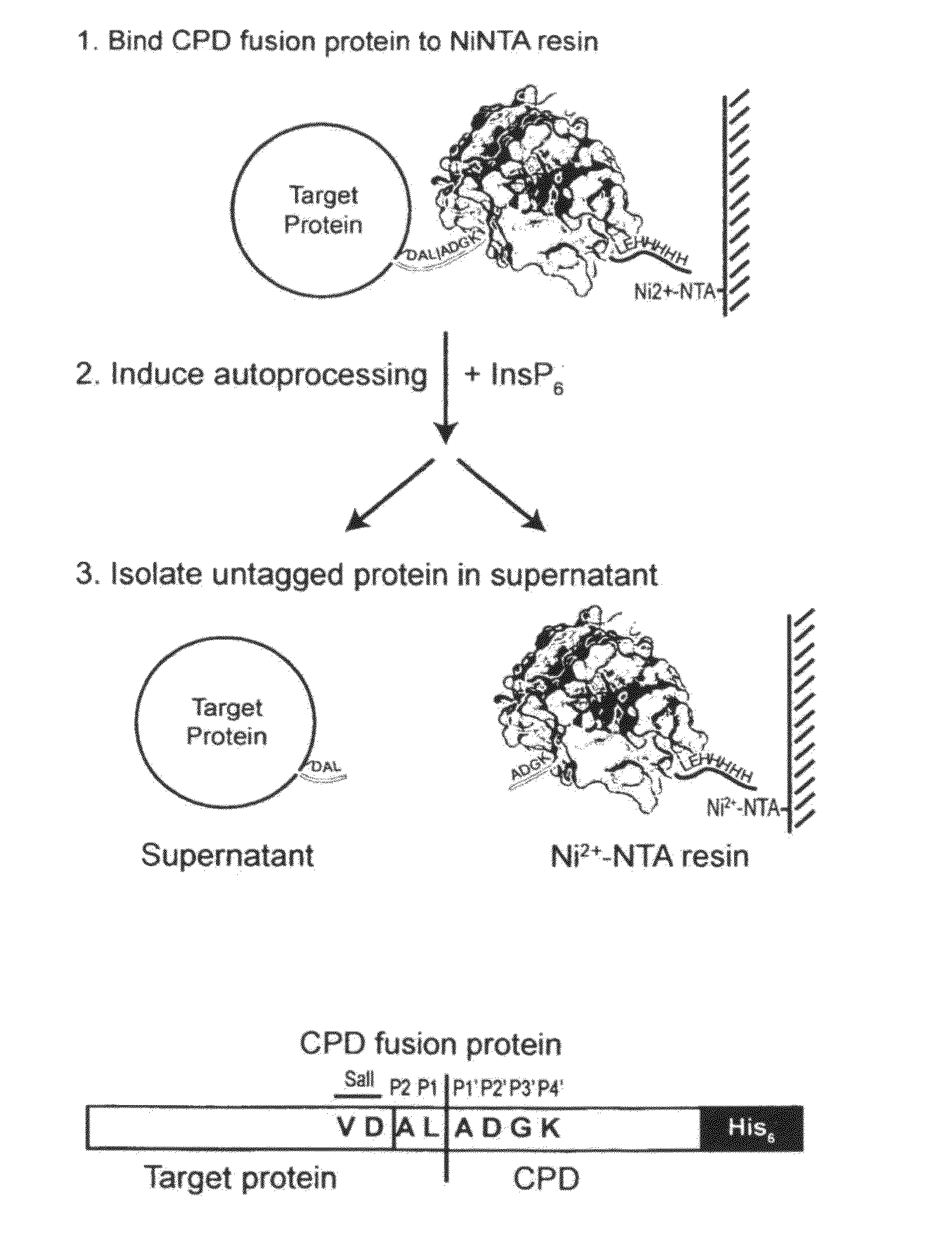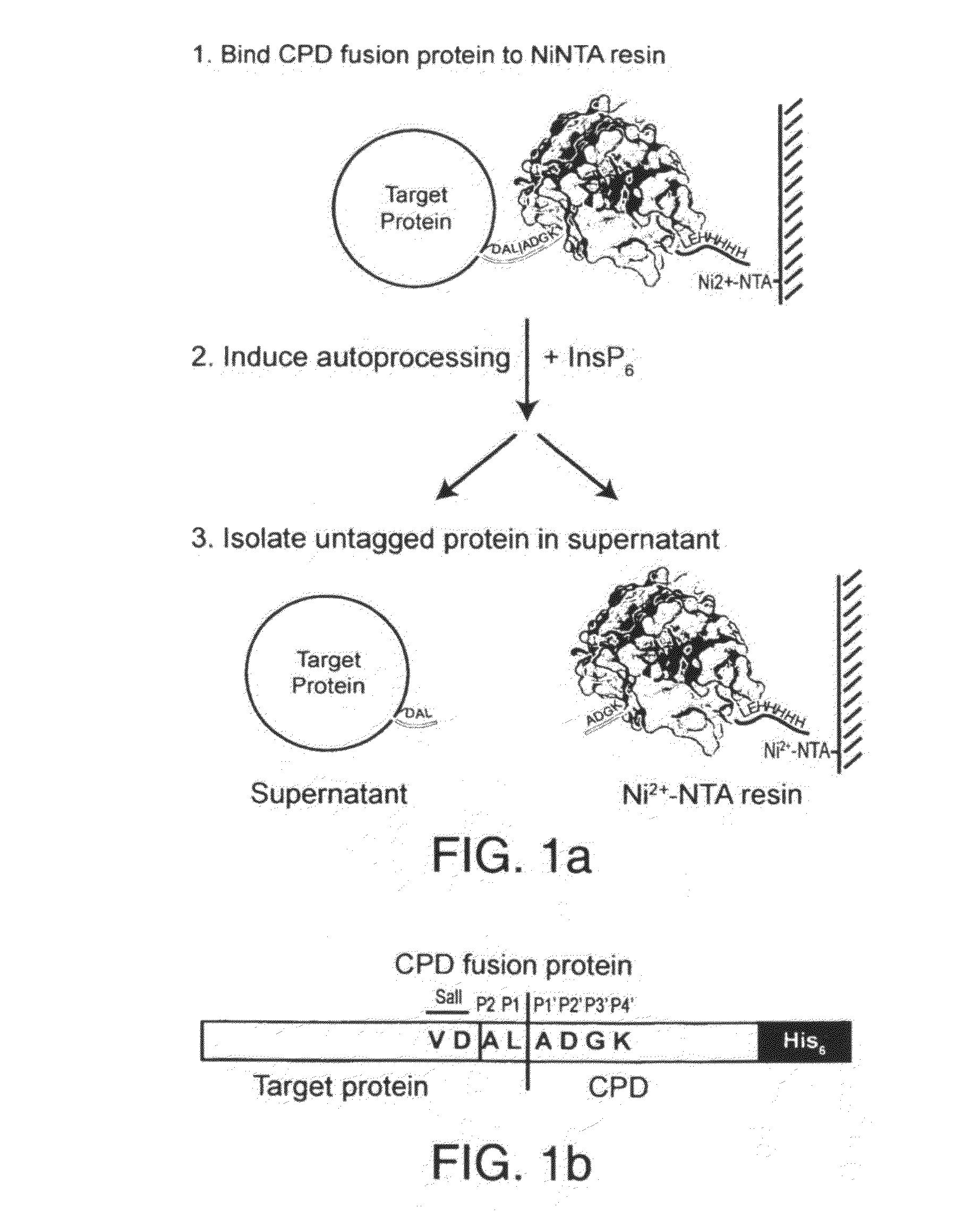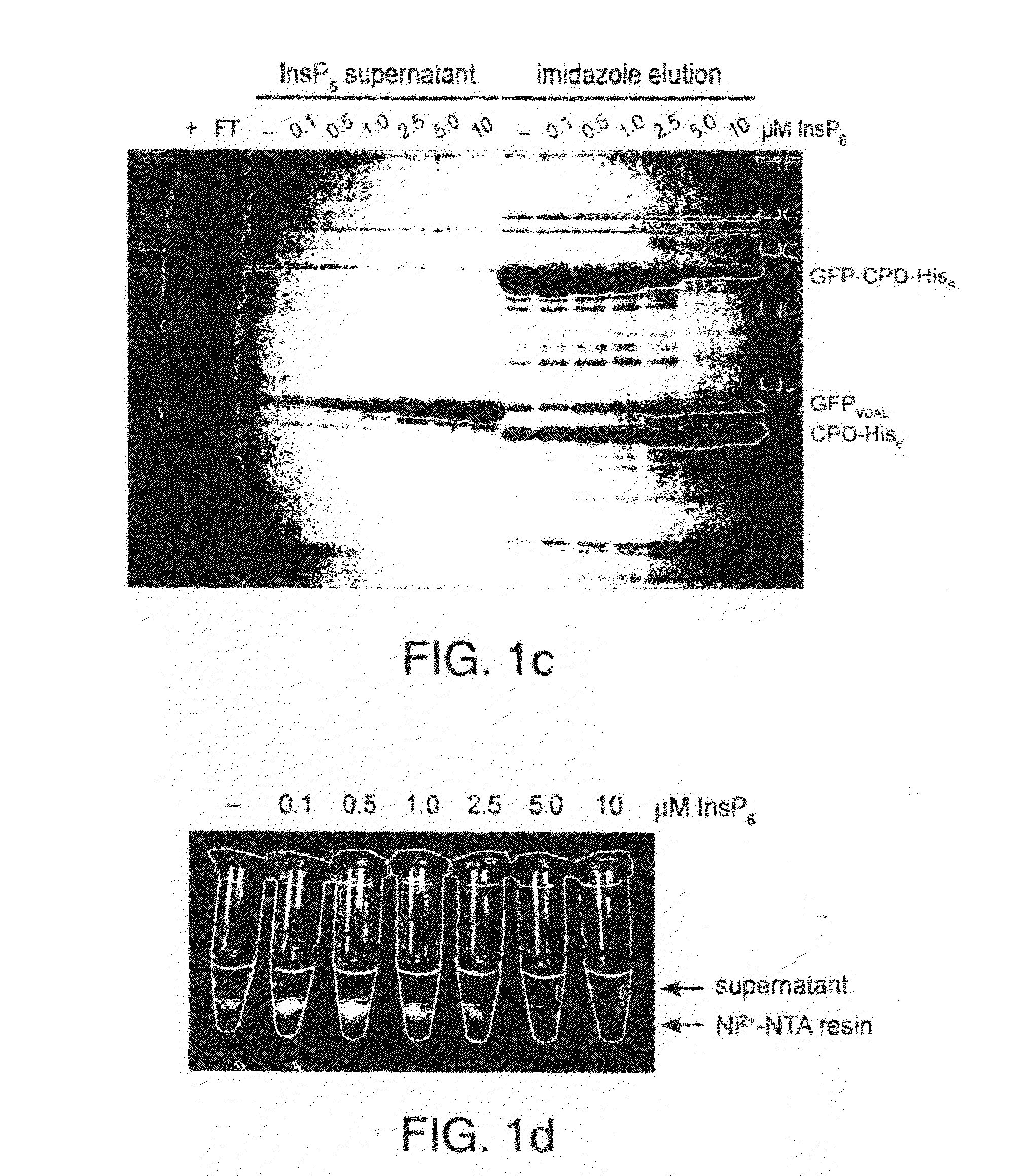Inducible self-cleaving protease tag and method of purifying recombinant proteins using the same
- Summary
- Abstract
- Description
- Claims
- Application Information
AI Technical Summary
Benefits of technology
Problems solved by technology
Method used
Image
Examples
Embodiment Construction
[0016]To circumvent the above disadvantages, the present inventors have developed an on-bead cleavage purification system in which a site-specific affinity-tagged protease is fused directly to the target protein (FIGS. 1a and b). A principal advantage of this approach is that affinity purification, cleavage, and separation of the untagged target protein from the endoprotease is condensed into a single step. This system combines the simplicity of onestep purification systems with many of the advantages of affinity tags, such as enhanced expression, integrity, and solubility of target proteins.
[0017]An important element of this purification method is the use of the Vibrio cholerae MARTX toxin cysteine protease domain (CPD). The CPD exhibits several properties that make it amenable to its development into an inducible autocleaving protease tag First, the CPD is a highly specific protease that cleaves exclusively after Leu residues4. In the native toxin, the CPD processes the MARTX toxi...
PUM
| Property | Measurement | Unit |
|---|---|---|
| Temperature | aaaaa | aaaaa |
| Acidity | aaaaa | aaaaa |
| Time | aaaaa | aaaaa |
Abstract
Description
Claims
Application Information
 Login to View More
Login to View More - R&D
- Intellectual Property
- Life Sciences
- Materials
- Tech Scout
- Unparalleled Data Quality
- Higher Quality Content
- 60% Fewer Hallucinations
Browse by: Latest US Patents, China's latest patents, Technical Efficacy Thesaurus, Application Domain, Technology Topic, Popular Technical Reports.
© 2025 PatSnap. All rights reserved.Legal|Privacy policy|Modern Slavery Act Transparency Statement|Sitemap|About US| Contact US: help@patsnap.com



